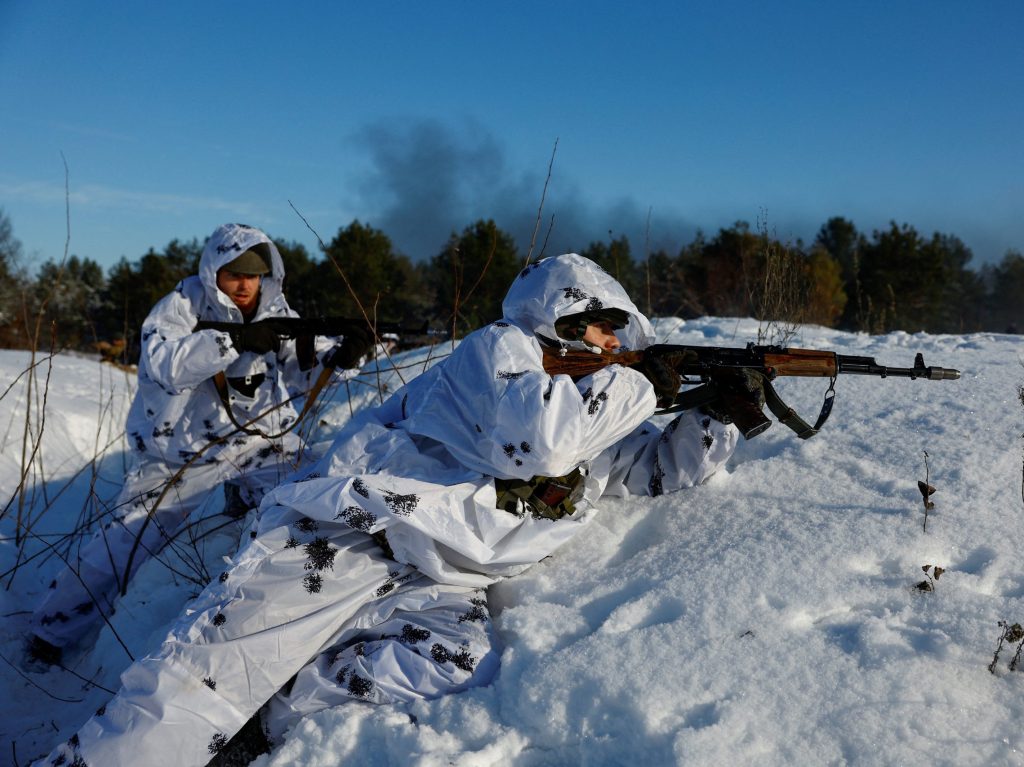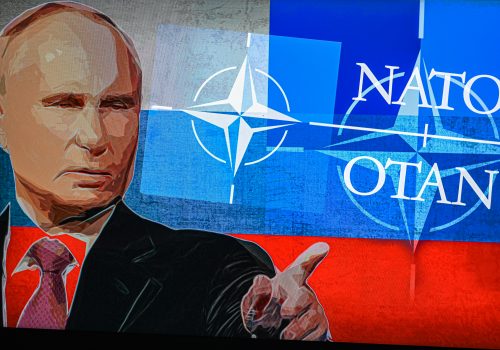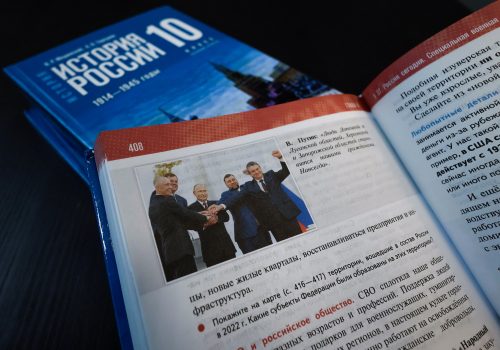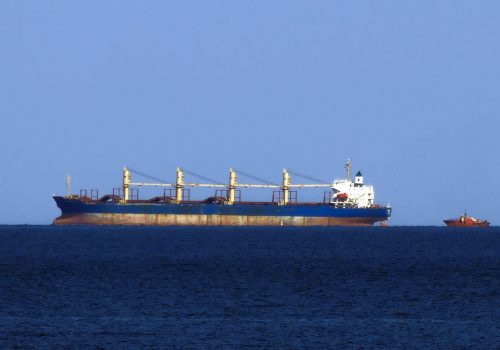Where is the Russian invasion of Ukraine headed in 2024? Ukrainian commander-in-chief Valery Zaluzhny’s sobering recent assessment of his army’s stalled counteroffensive has generated widespread attention and a measure of disillusionment among those who expected a decisive breakthrough during the 2023 campaigning season. Experts from across the political and security spectrum are probing for answers, but the reasons for such disappointing results aren’t hard to discern. Ukraine cannot win the war without the kind of air power and long range fires that the country’s international partners have so far failed to provide.
Before assessing what went wrong in 2023, it is important to note that Ukrainian forces have achieved significant results, if not the dramatic breakthrough many had hoped for. By all accounts, Russian losses have far outstripped Ukrainian casualty figures. Large scale Russian attacks in eastern Ukraine have been consistently beaten off. The Russian Black Sea Fleet has been all but driven from Sevastopol despite Ukraine’s lack of air power and a surface navy, while painful drone attacks deep inside Russia have brought the war home to Russian citizens. Ukrainian air defenses, against all odds, have stifled the Russian air force. On balance, Ukraine has accomplished far more than most observers expected at the outbreak of the conflict.
Western aid has played a major role in keeping Ukraine in the fight, but some context is important when assessing this impact. The US has allocated over $100 billion for Ukraine since the war began. Importantly, however, conscious policy decisions have denied Ukraine some key capabilities essential to battlefield success. Despite urgent appeals, the US has withheld F-16 aircraft and pressured allies to do the same, forcing Ukraine to contest the air domain with drones and older air defense systems while denying its ground forces the air interdiction and close air support vital in high intensity conflicts. Outnumbered ten to one in combat aircraft, the Ukrainian Air Force can contribute little on the battlefield, though a limited transfer of older Polish and Slovak fighter jets has helped to offset combat losses.
Long range fires in the form of the tracked Multiple Launch Rocket System (MLRS) and wheeled High Mobility Artillery Rocket System (HIMARS), together with very long ranged and highly accurate Army Tactical Missile System (ATACMS) munitions have been supplied, but in relatively small quantities. Despite an inventory of hundreds of M1-series main battle tanks kept in storage, the US has delivered only 31 tanks to Ukraine, almost two years into the conflict.
The European Union for its part has contributed around $80 billion in overall aid, but much of this has been in the form of financial assistance rather than military supplies. A closer look shows that the burden has not been fairly shared across Europe. As a percentage of GDP, contributions from Poland, Finland, the Baltic States, and Norway, all of whom share a border with the Russian Federation, far outstrip wealthier states like Germany, France, and Italy.
In addition to MiG-29s, Poland transferred more than 320 modernized main battle tanks to Ukraine in 2022 and early 2023, replacing most of Ukraine’s battlefield losses. Estonia transferred all of its 155mm howitzers and more than a third of its annual defense budget to Ukraine. Latvia contributed all of its Stinger missiles. Tiny Lithuania has contributed almost $1 billion in aid of all types, second only to Norway as a percentage of GDP. Britain, too, has played a leading role, providing NLAW anti-tank systems, Storm Shadow cruise missiles, and Challenger tanks to Ukraine when others have remained reluctant, thereby “priming the pump” for major allies to follow suit.
Clearly, those states most threatened by Russian aggression have shown far greater commitment to supporting Ukraine. For the most part, the rest have followed the US lead in helping Ukraine to resist further Russian territorial gains, but have denied Ukraine the means to achieve decisive success in reclaiming occupied territory. Above all, this means no or very few main battle tanks, fighter aircraft, or long range missile artillery.
Stay updated
As the world watches the Russian invasion of Ukraine unfold, UkraineAlert delivers the best Atlantic Council expert insight and analysis on Ukraine twice a week directly to your inbox.
What accounts for the West’s cautious approach to supporting Ukraine? It appears to be driven by three key concerns. Firstly, some Western policymakers fear that providing Ukraine with the weapons and capabilities to win will cross a “red line” and provoke Putin to risk nuclear war. Secondly, there is alarm that a decisive Russian defeat in Ukraine would lead to Putin’s overthrow, with chaos likely to follow. The third factor is the belief that Russia must be preserved as a major player and crucial element in the international system, something defeat in Ukraine could call into question.
The possibility of Russia using nuclear weapons has been dismissed by many experts, including the Director of US Central Intelligence. Deploying nuclear weapons might well lead to uncontrolled escalation and the end of Putin’s regime or even Russia itself. Putin’s famed “escalate to deescalate” doctrine, essentially nuclear saber-rattling to preclude Western intervention, has proven successful due to timidity on the part of US and European leaders, but this does not constitute actual intent. For eight decades, nuclear deterrence has proven to be stable and durable. The US has invested trillions in its nuclear systems and should have faith in its own ability to deter Putin.
Worries over the potential instability of a post-Putin Russia are similarly unconvincing. If Putin is overthrown due to failure in Ukraine, would his successors really adopt the same course and attempt to renew Russian aggression? Any successor would be faced with a shattered military, a damaged economy, and a disillusioned and despondent population. Russian elites, many of whom have a taste for Western luxuries, are more likely to seek escape from Western sanctions and reintegration into the international community. And even in an autocratic society, the Russian people will have a voice in a new Russia. After suffering fearful losses and economic deprivation, they will also want change.
The argument in favor of preserving Russia as a key element of the international system is perhaps the hardest of all to defend. Putin does not want a stable international system and is unlikely to ever operate as a responsible player within it. Following the collapse of the Soviet Union, democracy was on the march and autocracy seemed to be in full retreat. Today, China, Russia, Iran, and North Korea combine to present a formidable challenge to traditional Western liberalism and democracy, with the Putin regime serving as a destabilizing factor in international affairs.
Defeat in Ukraine and regime change in Moscow would undoubtedly lead to a diminution of Russian power in the near and mid-term. Some parts of the Russian Federation with non-Russian majorities such as Chechnya, Dagestan, Tatarstan, North Ossetia and others might break away. However, the core of the Russian state with its nuclear weapons and vast energy, agricultural, and mineral resources would remain viable and intact and would have clear incentives to act in accordance with international norms and rules.
Eurasia Center events

The Biden administration deserves credit for its efforts to support the survival of Ukraine as an independent state. But its policy objective has not been to enable Ukrainian victory. Time and again, President Biden and his chief aides have warned about the dangers of provoking World War III as a rationale for withholding critical assistance. The major European powers have for the most part followed suit. The irony here is that pursuing a policy designed to prevent a Russian victory while denying Ukraine the tools its needs to win actually increases the chances of an even more dangerous conflict in Europe.
As the war grinds on, international support for Ukraine must wane. Far smaller in population and resources, Ukraine’s military and Ukrainian society cannot endure large scale war indefinitely. In time, Ukrainian morale and national resolve will degrade. Though Russia has suffered enormous losses, it has far greater resources. With the support of China and other autocratic regimes, Moscow has the capacity to carry on the invasion of Ukraine for many years.
Unless the current dynamics of the invasion change in 2024, the most likely result is yet another frozen conflict like Georgia and Moldova, but with Russian forces occupying the sovereign territory of a neighboring state on a much larger and more dangerous scale. In this circumstance, Russia is unlikely to lick its wounds and slumber. Instead, any pause in the invasion of Ukraine would allow the Russian military to refit and retrain.
Meanwhile, Putin’s well-documented imperial ambitions would seek new outlets. If the West falters in Ukraine, the Baltic States and even Poland would be squarely in Putin’s sights, raising the chances that the US will become directly involved due to its NATO treaty obligations.
Had the US and its NATO allies committed themselves in spring 2022 to a Ukrainian victory, Ukraine would now possess a superior tank fleet, a capable air force, ample long range fires able to reach deep into the Russian rear, and breaching assets capable of solving the problem of dense minefields. In all likelihood, Ukraine’s recent counteroffensive would have succeeded in turning the tide decisively in Ukraine’s favor. No NATO soldiers would have had to enter the fight, and at a small fraction of NATO defense budgets, the Russian military threat could have been neutered for a generation. Most importantly of all, the prospects for escalation and a direct confrontation between Russia and NATO would have been dramatically reduced.
That outcome is still possible and can be achieved without wrecking Western defense budgets, alliance cohesion, or domestic politics. However, time is running out. Ukraine remains defiant but its forces have been mauled and are increasingly suffering from ammunition shortages. A policy reversal by Western leaders in early 2024 could see Ukraine equipped with the capabilities it needs to win the war by the end of the year. Above all, that means artillery ammunition, long range fires, air power, and assault breaching equipment.
A stirring Ukrainian success in 2024 would have far-reaching effects for European security and international stability. Aggressive authoritarian regimes like China and Iran would be chastened, not encouraged. Global food security and supply chain disruptions would be eased. Putin would probably be removed, with reasonable prospects for improved relations between Russia and the West and a more stable international equilibrium.
In all of this, Western leaders must be reminded that the world remains a dangerous place. Half measures do not enhance deterrence and do not impress aggressors. If we seek to avoid conflict and confrontation with Russia and with others, we must do so in concert with friends and allies with determination and a measure of boldness. So far, we are falling short.
Richard D. Hooker Jr. is a nonresident senior fellow with the Atlantic Council. He previously served as Dean of the NATO Defense College and as Special Assistant to the US President and Senior Director for Europe and Russia with the National Security Council.
Further reading
The views expressed in UkraineAlert are solely those of the authors and do not necessarily reflect the views of the Atlantic Council, its staff, or its supporters.

The Eurasia Center’s mission is to enhance transatlantic cooperation in promoting stability, democratic values and prosperity in Eurasia, from Eastern Europe and Turkey in the West to the Caucasus, Russia and Central Asia in the East.
Follow us on social media
and support our work
Image: Ukrainian servicemen take part in anti-sabotage drills, amid Russia's attack on Ukraine, in Chernihiv region, Ukraine December 5, 2023. (REUTERS/Valentyn Ogirenko)




